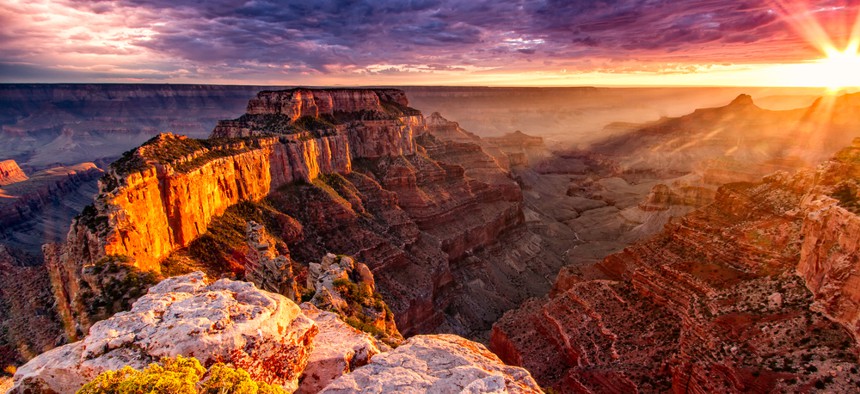
A sense of awe puts things in perspective. Image via Erik Harrison/Shutterstock.com
Get More Hours Out of Your Day by Looking at Something Awesome
Expand your perception of time by looking at something awe inspiring.
If you’re feeling pressed for time, you’re not alone. Surveys show most working Americans feel that way. But what if there were a way to expand those precious minutes and hours? Research suggests there may be one: Elicit a sense of awe.
Experiencing something awe-inspiring—whether it’s the Grand Canyon, a soaring cathedral, or a Puccini aria—can expand perceptions of time, enhancing quality of life. The key, says Stanford’s Jennifer Aaker, a professor of marketing at Stanford Graduate School of Business and co-author of a new paper on the subject, is that awe makes us feel small, not larger than life, the way happiness can. “When you feel small, there’s a reapportioning of what’s out there,” she says. “Time is reapportioned also.”
The study, for the journal Psychological Science, defines awe as something that is both vast (in size, scope, number, ability, or importance) and capable of altering one’s view of the world. To calculate the effects of awe on how people perceive and use time, Aaker—along with lead author Melanie Rudd of Stanford Graduate School of Business’ PhD program, and Kathleen D. Vohs, a professor at the University of Minnesota’s Carlson School of Management—conducted three experiments. In the first, they sought to assess whether awe would be more likely than happiness to enhance the perception of available time. They asked 63 students to watch a 60-second television ad. One group watched a commercial depicting people encountering “awesome” images—waterfalls, whales, and space exploration. The other group watched a commercial that showed individuals crossing paths with a parade of happy, brightly dressed people tossing confetti. After, they all rated their agreement with a series of beliefs, including four key variations on the idea: “I have lots of time in which I can get things done.”
Consistently, subjects who had watched the “awe” commercial agreed more strongly with the statements relating to ample time than those who had watched the “happy” ad. “When you feel awe, you feel very present—it captivates you in the current moment,” says Rudd. “And when you are so focused on the here and now, the present moment is expanded—and time along with it.”






